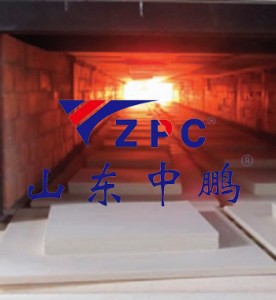Beside the 1000 ℃ kiln, in the industrial environmental protection desulfurization system, and inside the precision optical instruments, there is always a material that silently withstands the test of extreme temperatures – it is silicon carbide ceramics known as “industrial black gold”. As an important material in the modern industrial field, the thermal properties exhibited by silicon carbide ceramics are redefining human understanding of high-temperature materials.

1、 The ‘fast lane’ of heat conduction
Silicon carbide ceramics have thermal conductivity comparable to metals, with a thermal conductivity several times higher than that of ordinary ceramic materials. This unique thermal conductivity is attributed to the tightly arranged silicon carbon atoms in its crystal structure, which form efficient heat conduction channels. When heat is transferred inside the material, it is like a vehicle driving on an unobstructed highway, which can quickly and evenly disperse the heat, avoiding safety hazards caused by local overheating.
2、 Longevity in high-temperature environments
At an extreme high temperature of 1350 ℃, most metal materials have already softened and deformed, while silicon carbide ceramics can still maintain structural integrity. This excellent high-temperature resistance comes from the strong covalent bonding inside the material, like building an indestructible micro fortress. Even more rare is that in high-temperature oxidation environments, a dense silica protective layer forms on its surface, forming a natural “protective shield”.
![]()
3、 The ‘Endurance King’ of High Temperature Endurance War
In the marathon race of sustained high temperatures, many materials experience performance degradation due to prolonged heating, while reaction sintered silicon carbide ceramics demonstrate astonishing durability. The secret lies in the unique grain boundary design – a three-dimensional network structure formed through reaction sintering technology, which is like attaching millions of micro “anchor points” to the material. Even after thousands of hours of high-temperature baking, it can still lock in the stability of the microstructure. This characteristic makes it the best choice to replace traditional metal materials in scenarios such as continuous casting rollers in the metallurgical industry and high-temperature load-bearing components in chemical equipment. It interprets what “high temperature does not fade” means with “hard strength”.
When your device needs to challenge temperature limits, reaction sintered silicon carbide ceramics may be the trusted ‘temperature controller’. As an industry practitioner specializing in reaction sintering technology, Shandong Zhongpeng utilizes various patented technologies to enhance the mechanical strength and processing performance of materials while maintaining excellent thermal properties. This technological breakthrough not only reduces production costs, but also demonstrates broader application prospects for silicon carbide ceramics in emerging industrial fields.
Post time: May-16-2025